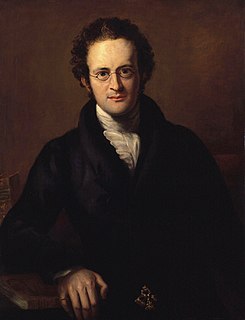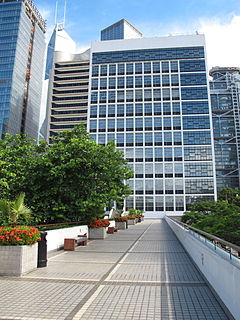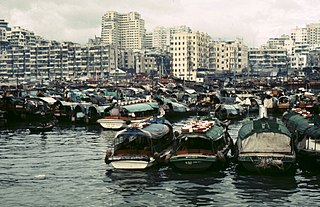Related Research Articles

The Governor of Hong Kong was the representative of the British Crown in Hong Kong from 1843 to 1997. In this capacity, the governor was president of the Executive Council and Commander-in-Chief of the British Forces Overseas Hong Kong. The governor's roles were defined in the Hong Kong Letters Patent and Royal Instructions. Upon the end of British rule and the handover of Hong Kong to China in 1997, most of the civil functions of this office went to the Chief Executive of Hong Kong, and military functions went to the Commander of the People's Liberation Army Hong Kong Garrison.

Sir John Bowring was an English political economist, traveller, writer, literary translator, polyglot and the fourth Governor of Hong Kong.

Sir Harry Smith Parkes was a British diplomat who served as Envoy Extraordinary and Minister Plenipotentiary and Consul General of the United Kingdom to the Empire of Japan from 1865 to 1883 and the Chinese Qing Empire from 1883 to 1885, and Minister to Korea in 1884. Parkes Street in Kowloon, Hong Kong is named after him.

The Royal Asiatic Society of Great Britain and Ireland, commonly known as the Royal Asiatic Society (RAS), was established, according to its royal charter of 11 August 1824, to further "the investigation of subjects connected with and for the encouragement of science, literature and the arts in relation to Asia." From its incorporation the society has been a forum, through lectures, its journal, and other publications, for scholarship relating to Asian culture and society of the highest level. It is the United Kingdom's senior learned society in the field of Asian studies. Fellows of the society are elected regularly. Fellows include highly accomplished and notable scholars of Asian studies. They are entitled to use the post-nominal letters FRAS.

The Cathedral Church of Saint John the Evangelist is the cathedral of the Anglican Diocese of Hong Kong Island, and mother church to the Province of Hong Kong and Macao. It is the seat of the Archbishop of Hong Kong and the Bishop of Hong Kong Island.

Hong Kong City Hall is a building located at Edinburgh Place, Central, Hong Kong Island, Hong Kong.

Sir John Francis Davis, 1st Baronet was a British diplomat and sinologist who served as second Governor of Hong Kong from 1844 to 1848. Davis was the first President of Royal Asiatic Society Hong Kong.

Sir Cecil Clementi was a British colonial administrator who served as Governor of Hong Kong from 1925 to 1930, and Governor and Commander-in-Chief of the Straits Settlements from 1930 to 1934.

Devil's Peak is a peak that lies beside Lei Yue Mun channel close to Yau Tong, Hong Kong. The area around the peak was garrisoned by the British Army in the 20th century and prior to that, by local pirates in the 19th century to control the passage of Lei Yue Mun, an important nautical passage that leads to Victoria Harbour. The remnants of a redoubt and batteries are still visible on the peak.

Sir James Haldane Stewart Lockhart, was a British colonial official in Hong Kong and China for more than 40 years. He also served as Commissioner of British Weihaiwei from 1902 to 1921. Additionally, he was a Sinologist who made pioneering translations.

William Thomas Mercer (Chinese: 孖沙; Sidney Lau: Ma1 Sa1) (17 October 1821 – 23 May 1879) was a British colonial administrator who served in Hong Kong from 1844 to 1866.

William Caine was the first head of the Hong Kong Police Force, Colonial Secretary of Hong Kong from 1854 to 1859. He attained the rank of Lieutenant Colonel prior to his secretary appointment. Caine was also the acting Governor of Hong Kong between May and September 1859.

Yau Ma Tei Typhoon Shelter is a typhoon shelter located near Yau Ma Tei, Kowloon, Hong Kong.

The Royal Asiatic Society Korea Branch is a learned society based in Seoul, South Korea. Established in 1900 as the world's first Korean studies organization, it was founded to provide a platform for scholarly research on the history, culture and natural landscapes of the Korean Peninsula. It is thought to be the oldest English-language academic organization now existing that is devoted exclusively to the discipline known as Korean studies.

Sir Man-kam Lo, CBE was a Eurasian lawyer in Hong Kong and unofficial member of the Executive Council and the Legislative Council of Hong Kong.

Sir Thomas Francis Wade, was a British diplomat and sinologist who produced an early Chinese textbook in English, in 1867, that was later amended, extended and converted into the Wade-Giles romanization system for Mandarin Chinese by Herbert Giles in 1892. He was the first professor of Chinese at Cambridge University.

Our Lady of Mount Carmel Church is a Roman Catholic church in the Diocese of Hong Kong. It is located in the Wanchai district at 1 Star Street. The church is unique being located within a private multi-storey residential building, rather than a stand-alone structure. The current parish priest is Rev. Thomas Law Kwok-Fai.
The Royal Asiatic Society China is a learned society based in Shanghai and Beijing, China.
Daniel Richard Francis Caldwell was a colonial government official in Hong Kong. He was Registrar General and Protector of Chinese from 1856 to 1862 and was involved in the notorious Caldwell Affair in the late 1850s.
William Tarrant was a civil servant and newspaper editor in British Hong Kong. He served as Inspector of Land and Roads and subsequently Registrar of Deeds in the Hong Kong colonial administration from 1842 to 1847, but was removed from office and barred from public service owing to allegations he had raised against Colonial Secretary William Caine, which an internal government inquiry held to be fabricated. Tarrant then began a new career in journalism, purchasing the Friend of China newspaper in 1850. He became prominently involved in a scandal involving multiple senior government officers, the Caldwell affair, in 1857, and was ultimately found guilty of libel and imprisoned in 1859. He left the colony after his release in 1860, and made two attempts over the course of the 1860s to restart the Friend of China in Guangzhou and Shanghai, each proving abortive. Finally, he sold the paper in 1869 and retired to England, where he died in 1872.
References
- ↑ "Scholarly Societies Project". Scholarly-societies.org. Retrieved 31 October 2014.
- 1 2 3 4 "Royal Asiatic Society Hong Kong Branch Website". Royalasiaticsociety.org.hk. Retrieved 31 October 2014.
- ↑ "Royal Asiatic Society Hong Kong Branch Website history". Royalasiaticsociety.org.hk. Retrieved 8 June 2021.
- ↑ The University of Hong Kong Libraries. "Hong Kong Journals Online". Hkjo.lib.hku.hk. Retrieved 31 October 2014.
- ↑ Leisure and Cultural Services Department: List of Museum Expert Advisers
- ↑ Royal Asiatic Society Hong Kong – Officers